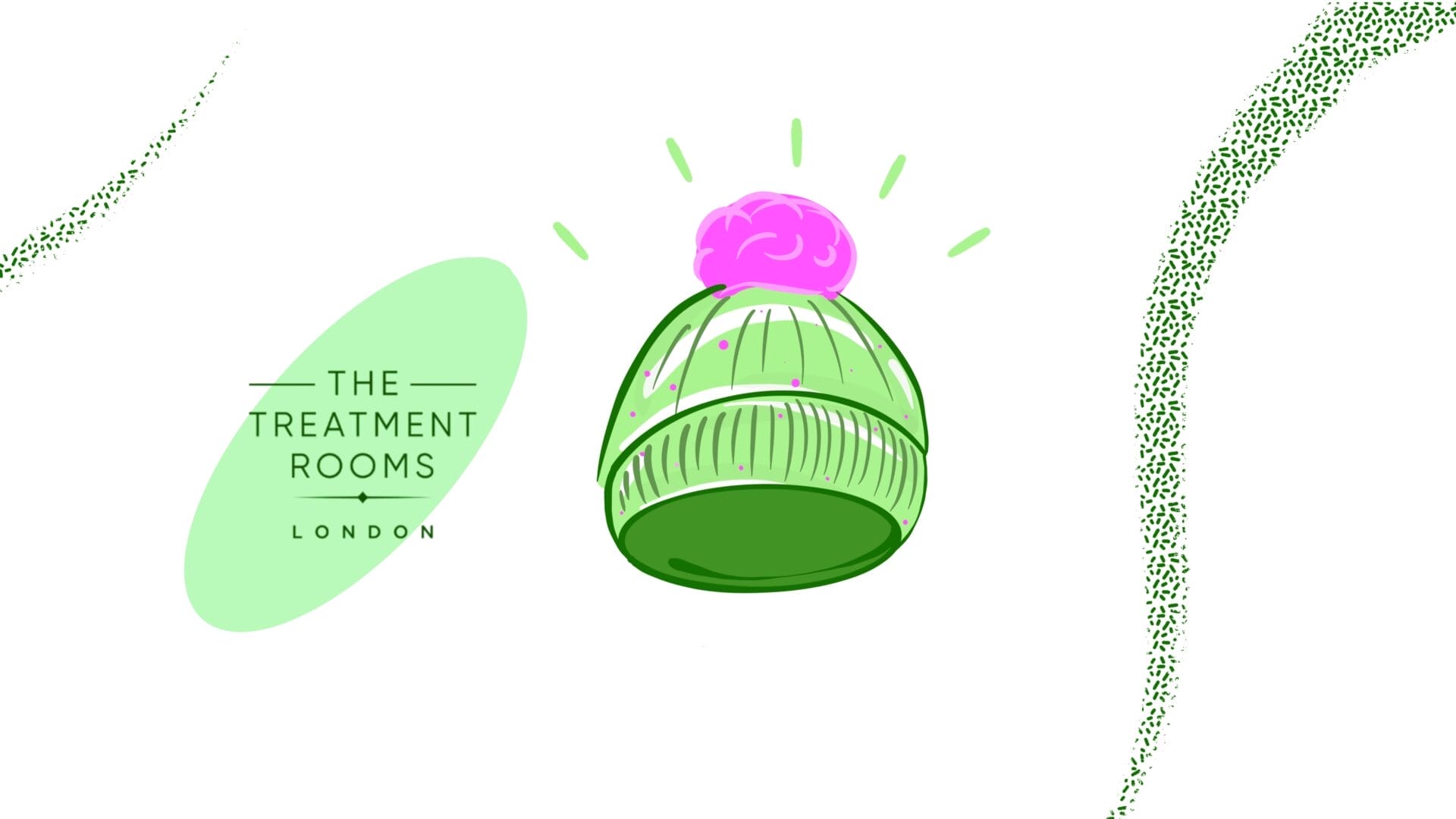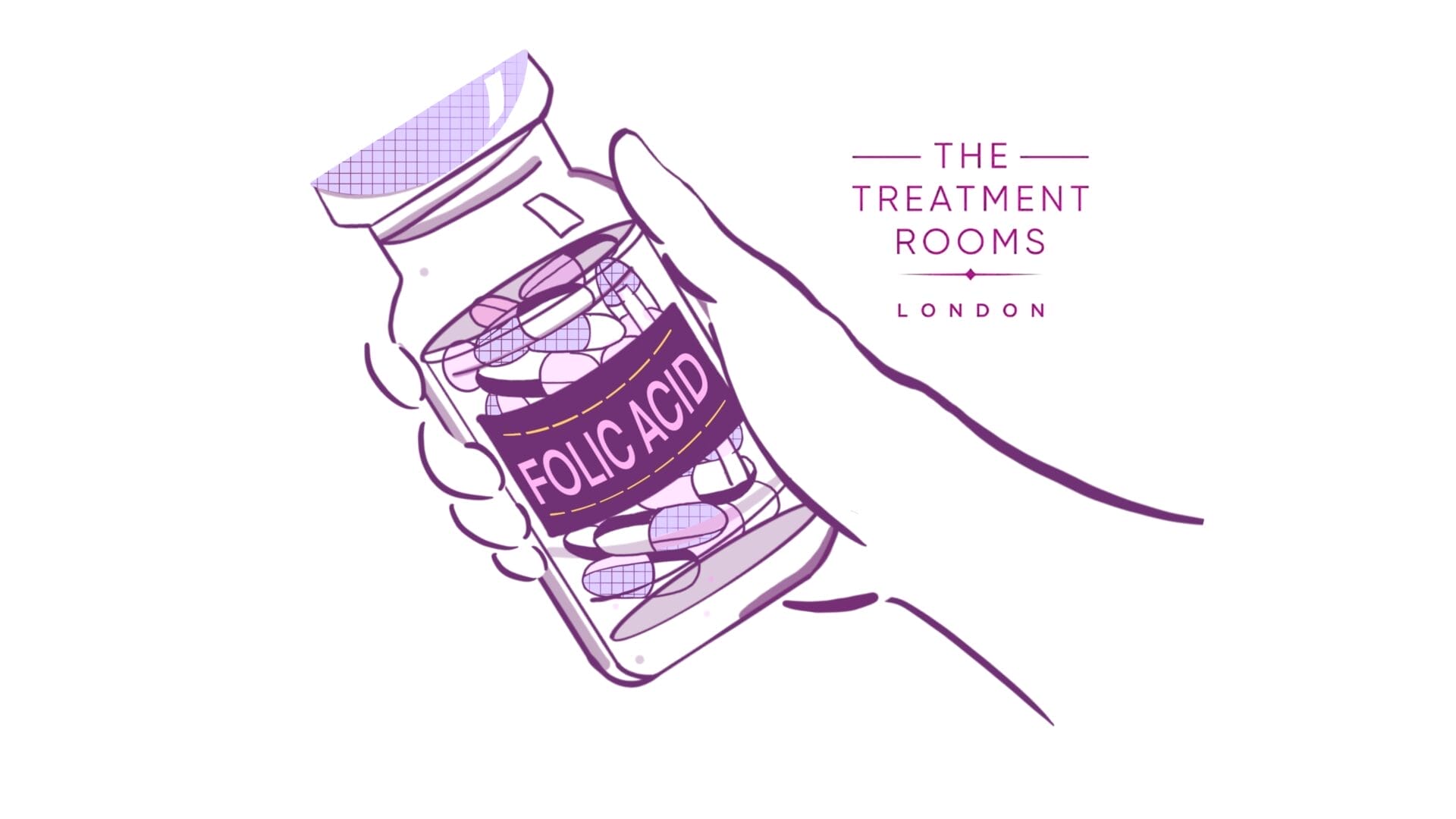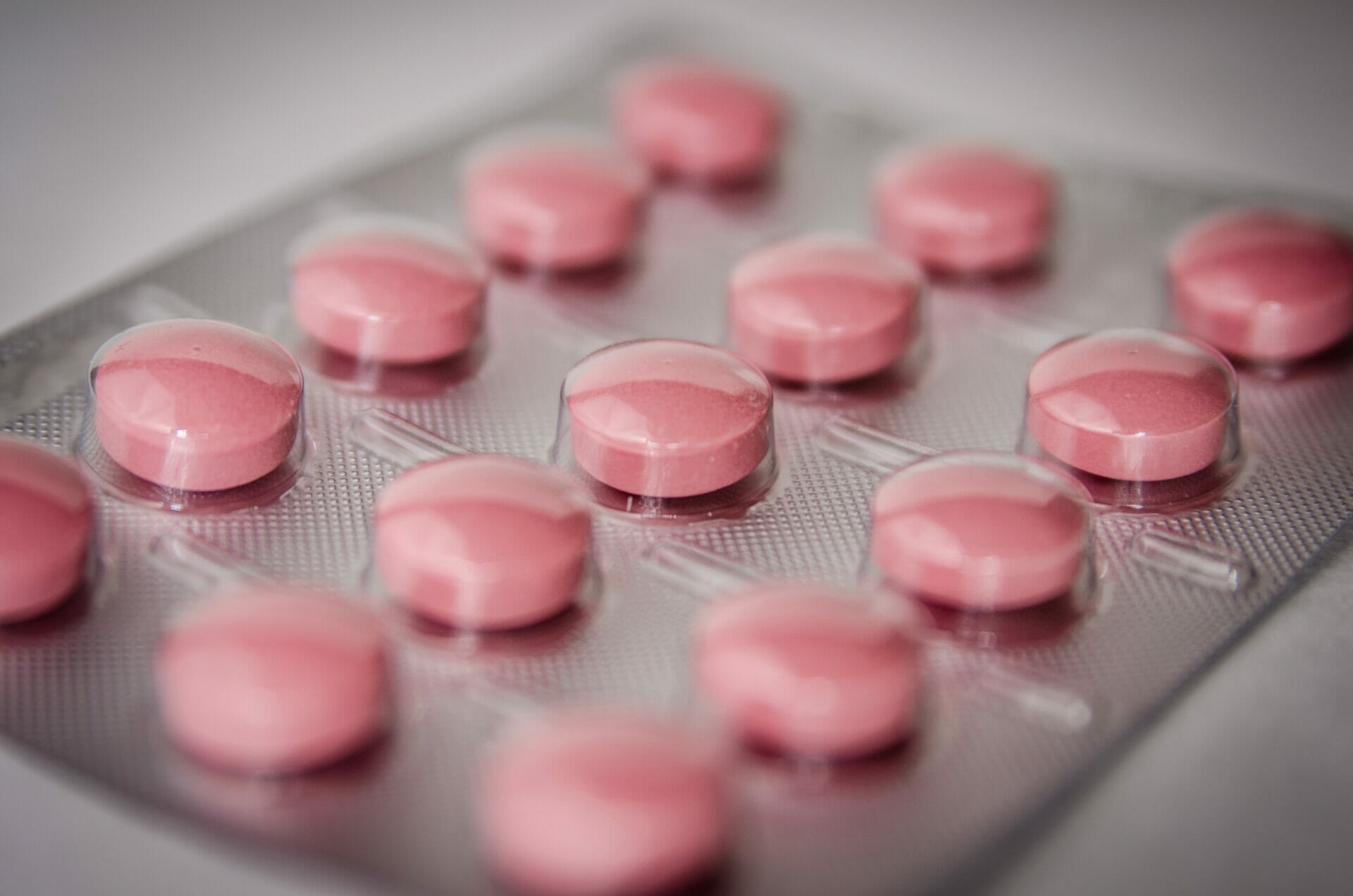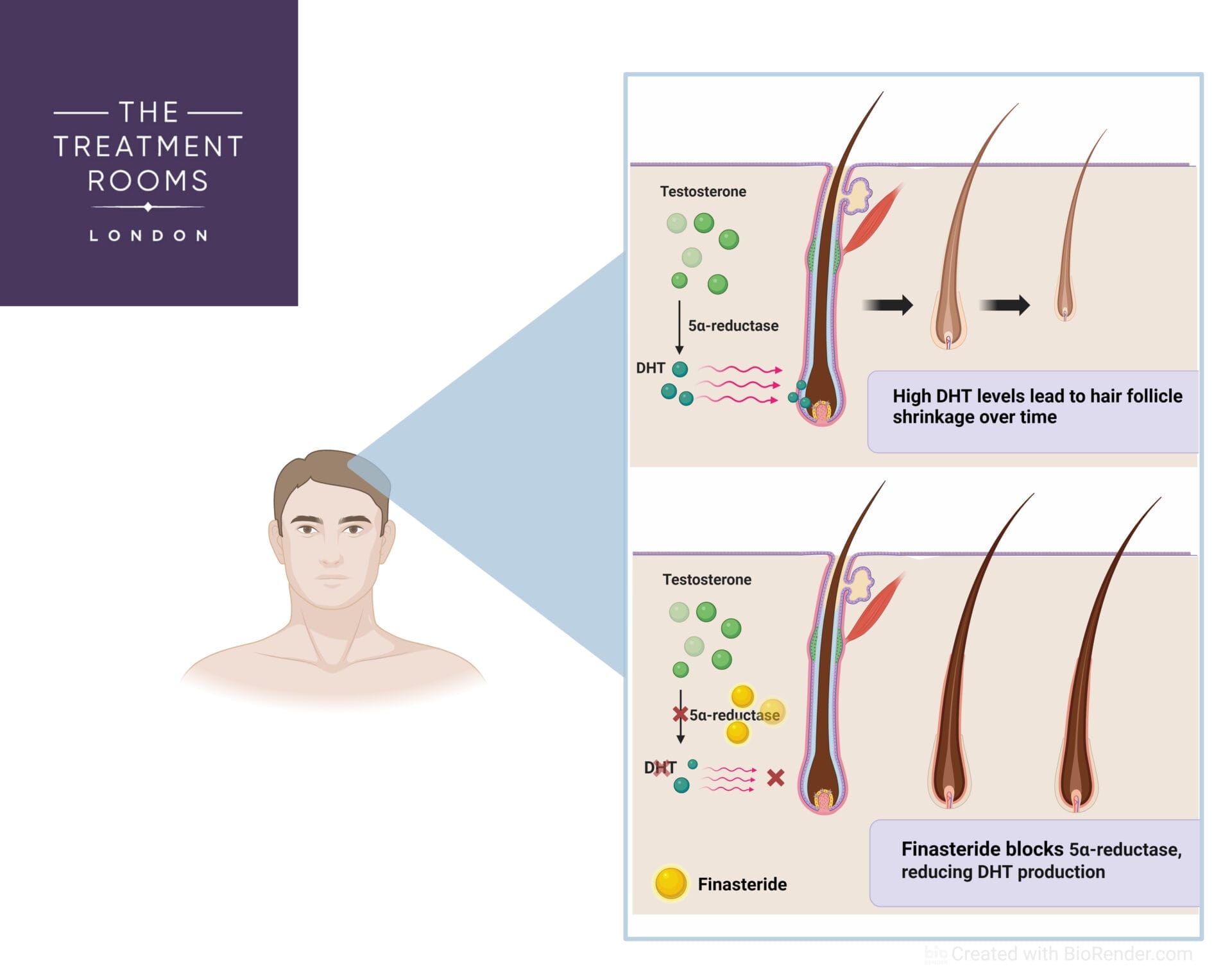If you are looking for a “DHI hair transplant”, this article will give you everything you need to know about them. It is a standard method of implanting hair into the scalp; however, it is essential to understand the difference between implanter pens and recipient site creation when it comes to FUE and FUT hair transplant surgery.
We have always used implanter pens when carrying out hair transplant surgery in our clinic. We find patients recover faster and have better quality results with the technique. Whilst the technique is more laborious, we don’t mind and are happy to go the extra mile for our patients
Dr Vara, Hair Transplant Surgeon and Director at The Treatment Rooms London
What is a DHI Hair Transplant?
“DHI” stands for “Direct Hair Implantation” and is ultimately a marketing term used by many clinics. It often refers to when your hair transplant surgeon utilises a specialised sharp implanter pen to re-implant hair into the scalp and the latest guidance by the International Society of Hair Restoration Surgery advises that DHI does not actually refer to any specific hair transplant method and is ultimately a marketing term.
DHI hair transplant surgery performed by Dr Vara
The Treatment Rooms London has always specialised in the use of implanter pens in hair transplant surgery. Specifically, our Surgeons utilise dull implanter pens to reinsert grafts into pre-made incision sites. Sometimes our Surgeons utilise sharp implanters to reinsert hair back in the scalp, particularly in unshaven hair transplant surgery.

Both types of implanter pen hair transplant allow our Surgeons to precisely re-implant hair so it grows at the exact angle and direction required for a natural outcome.
All patients are operated on by our Surgeons using this technique to help achieve high-quality results that match the natural direction, angulation, and flow of the hair. This means results created with an implanter pen blend nicely with existing hair.
If you wanted to find out more and view our results, then please navigate the following link: Before & After Hair Transplantation

DHI Hair Transplant Surgery using Implanter Pens
In a hair transplant, grafts are extracted by Follicular Unit Excision (FUE) or Follicular Unit Transplantation (FUT) from the donor site. The grafts will then need to be re-implanted into recipient sites (holes where hair grafts are inserted), and this can be done using two primary methods: sharp or dull needle implant pens.
DHI hair transplant surgery step by step
The process of DHI hair transplant surgery can be performed using sharp or dull implanter pens. The main steps of DHI hair transplant surgery are:
- Drawing of hairline, crown or temples (1 hour)
- Anaesthesia of donor and recipient site (30 minutes)
- Extraction of hair using the FUE or FUT technique (2 hours)
- Lunch (30-45 minutes)
- Implantation of hair using DHI implanter pen (2 hours)
Hair Transplant Surgery Using Sharp Implanter Pens
Implanter pens re-insert grafts into the scalp at the same time a recipient site is created using a sharp needle. This can be misleadingly referred to as Direct Hair Implantation (DHI), as hairs are described as being “directly implanted” with a needle/ sharp implantation pen (1). There are two types: Choi Implanter Pens and Lion Implanter Pens. Both are very similar and don’t make a difference to the outcome of a hair transplant.
Pre-Made Recipient Sites & Using Dull Implanter Pens
Grafts can be reinserted into the scalp with “pre-made” holes or recipient sites created by a needle. This technique generally occurs in 2 stages. The first stage involves the surgeon creating holes, or “recipient sites,” using a needle or blade. These sites are made at a specific angle and direction to match the existing hair. A Surgeon, nurse or hair technician then comes and places the extracted grafts into each of these sites using a dull implanter pen in the second stage.
How Do Implanter Pens Work?
The image below shows what a Lion implanter pen looks like. They come in different sizes depending on the size of the hair being implanted. Your hair transplant surgeon will decide which size is best for you on your surgery day. Implanter pens have a needle with a hollow tip. The graft can be placed into this hollow tip as shown in the diagram below.

When the end of the pen is inserted into the scalp, it places the graft into the hole. In DHI or sharp implanter pen surgery, the hole is created and the graft placed into it simultaneously- this is demonstrated in the infographic below. In dull implanter pen use, the pen introduces the graft into the skin into a pre-made skin incision. Both techniques yield the same outcome.

Benefits of DHI hair transplant surgery
DHI, also known as the implanter pen hair transplant surgery, has several benefits over the traditional forceps technique for re-implanting hair back into the scalp. We will go into some benefits of DHI hair transplant surgery below.
Surgeon-Led Care
For your hair transplant to be carried out using implanter pens, you will require both a nurse/technician and a hair transplant surgeon to operate on your scalp throughout your operation. Using implanter pens requires a high degree of skill and experience, and our Surgeons at The Treatment Rooms London will only provide this technique. This means you can be assured that you have a qualified Surgeon performing your hair transplant at all times, giving you the best possible chance of a result you are happy with.
Depth, Angulation and Density of Hair Transplantation
A Surgeon will be able to control the depth, angulation and density of the implantation meticulously using an implanter pen. This also yields natural-looking results, blending new transplanted grafts seamlessly into existing hair in the hairline, crown, beard, or eyebrows.
Increased Survival Rate of the Graft during Hair Transplantation
As the graft spends less time outside the body and is handled less, there is an increased rate of its survival. This means the transplanted follicle is given every chance to survive the operation.
Better Healing Times after Hair Transplantation
With less trauma to the transplanted grafts, we find a lower incidence of shock loss and shedding of transplanted hair compared to grafts re-implanted using forceps.
Implantation Between Hairs
The implanter pen allows a surgeon to be more precise in his placement of the graft. This is even more important if you are having hair implanted in-between existing hair. This is a type of surgery that is beneficial for patients having an unshaven hair transplant.
Downsides to implanter pen hair transplant surgery:
- Higher price for the patient
- Longer surgery time
Implanter pen hair transplant surgery tends to be more expensive. This is because the surgery requires the presence of 1 or 2 surgeons, and the surgical process can be more time-consuming. Whilst you have extra assurance that your transplant is being given every chance to be natural and successful, these two factors mean the surgery comes at an increased price and can take longer to complete.
Cost Breakdown & Financing Options for DHI Transplants in the UK
The investment in a Direct Hair Implantation (DHI) transplant is only one of the milestones to consider before you begin the process of hair restoration. The price of a DHI transplant tends to be between £3,000 and £10,000 in the UK, with factors that affect this price being influenced by:
- Graft count: The vast majority of patients will need 1,000 to 2,000 follicular units.
- Surgeon experience: Doctors with extensive experience tend to charge a higher price per clinic.
- Geographic location: Bigger cities, such as London, tend to be more expensive than regional centres.
- Package deals: Other clinics include the price of pre-op tests, follow-up PRP sessions and post-op care with the quoted all-inclusive price.
Flexible Payment Plans and Financing
DHI hair transplants are now made more accessible by most clinics that provide:
- Interest-only instalment plans at 0% interest across a 6-12 month period, allowing you to pay off the cost gradually.
- Flexible Payment: deposits are due at the time of booking, and the balance is due at the time of surgery.
The difference can be covered by financing models, as cosmetic hair transplants are usually not covered by regular health insurance. Partial insurance cover might be available in unusual situations, e.g. after injury, where a plastic surgery is require,d hence it is worth phoning your insurance company.
Candidate Assessment & Candidacy Criteria for DHI
Not everyone is an ideal candidate for a DHI transplant. Your eligibility depends on both hair-loss pattern and overall health.
Evaluating Hair-Loss Stability and Donor Supply
- Pattern severity: Men typically fall between Norwood II and V; women between Ludwig I and II.
- Stable hair loss: Patients should demonstrate minimal hair loss progression for at least 6–12 months.
- Sufficient donor density: The back and sides of the scalp must have healthy, thick follicles to ensure a successful harvest without risking over-harvestation.
DHI Hair Transplant Consultation
Your first meeting with our hair transplant surgeon will cover:
- Diagnostic assessment: Dermoscopic evaluation of follicle miniaturisation and donor zone mapping.
- Hairline design: Photographs taken from multiple angles to plan natural-looking hair transplant.
- Procedure overview: Explanation of the implanter pen technique versus traditional forceps methods for re-implanting hair.
- Cost and financing review: A transparent breakdown of costs, plus discussion of instalment or finance options.
Recovery Timeline & Aftercare Following DHI
Knowing the day-by-day healing process and aftercare protocol can help you plan time off work and daily activities.
Day-by-Day Healing Guide
| Post-Op Days | Expected Symptoms | Key Aftercare Tips |
| Day 1–2 | Redness, tiny crusts around grafts | Gently spray saline solution; do not touch grafts |
| Day 3–5 | Peak swelling around the forehead and temples | Sleep semi-upright; use prescribed anti-inflammatories |
| Day 6–10 | Scabs begin sloughing; grafts may feel loose | No picking; start gently, cup-method shampoo rinsing |
| Weeks 2–4 | “Shock loss” of transplanted hairs is normal | Remain patient—new growth typically begins in month 3 |
| Months 3–6 | Fine, thin regrowth; occasional itching | Light scalp massage to boost circulation |
| Months 6–12 | Noticeable density increase; fuller appearance | Optional PRP or LLLT adjunct therapy for further enhancement |
Shampooing, Sun Protection & Activity Restrictions
- Shampooing:
- Begin gentle scalp soaking with a soft cup and baby shampoo on Day 4.
- Transition to normal shampooing shampoo after 2 weeks.
- Begin gentle scalp soaking with a soft cup and baby shampoo on Day 4.
- Sun exposure:
- Avoid direct strong sunlight for the first month; wear a loose-fitting hat.
- After 4 weeks, apply high SPF to any exposed areas.
- Avoid direct strong sunlight for the first month; wear a loose-fitting hat.
- Physical activity:
- Refrain from heavy lifting or vigorous exercise for 14 days.
- Steer clear of swimming pools and saunas for at least 4 weeks to reduce infection risks.
- Refrain from heavy lifting or vigorous exercise for 14 days.
Our Surgeons will go through the entire journey including your aftercare and recovery following your hair transplant in your dedicated consultation with them.
Interested in an implanter pen hair transplant with The Treatment Rooms London?
At The Treatment Rooms London, we have historically always used implant pens for our transplants. This has resulted in dense, natural-looking results for our patients, with improved recovery times. We have an open conversation with each of our patients about the different techniques of hair transplant surgery. Below you will see an example of a hair transplant result by using implant pens.

As a guide for patients considering the two techniques, one of the primary considerations is the size of the transplant. As implant pens transfer each graft individually into the recipient site, the surgery takes longer. As a result, if you require a large area to be transplanted, you may be required to have your transplant over two sessions.
Choosing to undergo a hair transplant should be based on several key considerations. You can find out more by reading our page on whether you are a candidate for an FUE hair transplant, or, for more information about costs, take a look at our hair transplant cost page.
To schedule a consultation with our hair transplant surgeon, please don’t hesitate to contact us today.
References
- Sethi and Bansal, 2013, Direct Hair Transplantation: A Modified Follicular Unit Extraction Technique, J Cutan Aesthet Surg, 6(2):100-105
- Marwah and Mysore, 2018. Recipient Area, J Cutan Aesthet Surg 11 (4): 202-210
- Zito and Raggio 2021, Hair Transplantation
- Lee et all, 2001, Evaluation of survival rate after follicular unit transplantation, Dermatol Surg Aug 27 (8): 716-20
- https://ishrs.org/patients/treatments-for-hair-loss/surgical-treatments/
Share:
Authored by
Reviewed by
Book a Consultation
Related Blogs
When Can You Safely Wear a Beanie After a Hair Transplant?
January 7, 2026
Quick Summary: When can you wear a beanie hat after a hair transplant? Cap Recommendations: Light, breathable caps,…
How To Make Your Hair Grow Faster After Having A Hair Transplant
January 6, 2026
Your hair will generally grow within 9-12 months after having a hair transplant. However, there are a…
Does Omega-3 Deficiency Cause Hair Loss?
January 6, 2026
Omega-3 is a fatty acid that is required for a healthy body, skin and hair. Modern-day diets…
Complete Guide on Folic Acid and Hair Loss
January 5, 2026
Quick Summary Hair loss is a widespread concern that affects millions of people globally. While genetics, hormonal…
What is DHT & Its Role in Hair Loss?
January 5, 2026
Hair loss is a common concern that millions, if not billions, of people experience at some point…
Guide To Finasteride For Hair Loss
January 5, 2026
One of the most effective medications for treating hair loss is Finasteride, which is often prescribed to…
Which Medications Cause Hair Loss?
January 4, 2026
Medicines are essential in treating diseases, enhancing health, and even saving lives. While medicines can be very…
When Can You Safely Use Oil After a Hair Transplant? Expert Timeline & Tips
January 4, 2026
There is simply something about running your fingers through healthy, well-nourished hair. Hair oils can moisturise the…
When Can You Use Nizoral After a Hair Transplant?
January 4, 2026
Nizoral is a medicated shampoo that contains the antifungal drug ketoconazole. This shampoo acts against fungal infections on…











